Improved Connected-Mode Discontinuous Reception (C-DRX) Power Saving and Delay Reduction Using Ensemble-Based Traffic Prediction
Abstract
1. Introduction
1.1. Background
1.2. Related Work
1.3. Contribution
- Traffic-aware C-DRX activation: Adjusting wake-up timing based on predicted traffic patterns to reduce unnecessary UE activations and enhance scheduling efficiency.
- Performance improvement: Experimental results show that the proposed method reduces cumulative active time by 20.9% and decreases mean data reception delay by 70.7%, significantly improving energy efficiency and network responsiveness.
- Computational efficiency: The RF-TCN model minimizes computational complexity while maintaining high predictive accuracy, making it suitable for real-time applications.
- Real-world applicability: The proposed method is evaluated on Netflix traffic data, demonstrating its effectiveness in practical mobile networks.
2. System Model
2.1. Network Architecture
2.2. Traffic Model
2.3. C-DRX Operation
- onDurationTimer: Defines the initial active period at the start of each C-DRX cycle. During this time, the UE monitors the physical downlink control channel (PDCCH) to detect incoming data transmissions.
- drx-InactivityTimer: Extends the active period following data reception, preventing frequent transitions between sleep and active states.
- shortDRX-Cycle: Specifies a short sleep interval for applications requiring frequent wake-ups, such as video streaming and video conferencing.
- drxShortCycleTimer: Determines the number of short C-DRX cycles before transitioning to a long C-DRX cycle.
- longDRX-Cycle: Defines an extended sleep interval to maximize power savings when traffic is sparse.
- : UE state at time t where 1 represents the active state, and 0 represents the sleep state.
- : Active status of the onDurationTimer at time t.
- : Remaining duration of the inactivity timer at time t.
- Proactive wake-up adjustment: The AI model predicts traffic occurrences in advance and fine-tunes C-DRX activation timing to minimize power consumption and reduce data reception delays.
- Traffic pattern adaptation: A hybrid ensemble model combines feature extraction using a random forest (RF) with sequential pattern learning through a temporal convolutional network (TCN), allowing the system to adapt to traffic variations and adjust C-DRX activation timing.
3. Traffic Data Characteristics and Baseline Model
3.1. Extended Activation Approach
- : The original traffic occurrence predicted by the model.
- : The final activation state after applying the extended activation approach.
- Reducing temporal misalignment: Ensures that C-DRX activation better aligns with actual traffic, minimizing data reception delays.
- Enhancing adaptability: Allows dynamic tuning of the activation range based on network conditions and service requirements.
3.2. Traffic Prediction Performance Metrics
- TP (True positive): The number of correctly predicted traffic occurrences.
- TN (True negative): The number of correctly predicted idle periods.
- FP (False positive): Instances where no traffic was present but incorrectly predicted as occurring.
- FN (False negative): Missed traffic occurrences where actual traffic was present but not predicted.
- (True extended prediction): Additional activations where the extended activation successfully captures actual traffic.
3.3. Timer-Based C-DRX Parameter Adjustment
- Average delay: The mean time between traffic occurrence and data transmission.
- Average active time: The proportion of time that the UE remains in an active state.
- False negative rate (FN rate): The proportion of missed traffic occurrences.
- Traffic data processing: The dataset was preprocessed and binarized to distinguish between traffic presence and idle periods.
- Multi-objective optimization with Optuna: Optuna was used to explore a wide range of C-DRX timer settings, minimizing delay, active time, and false negative rate.
- Pareto front selection: The best parameter sets were identified using a Pareto front approach, representing trade-offs where no single metric can be improved without degrading others.
- Balanced solution selection: Among the pareto optimal solutions, the configuration closest to the mean performance values of all three metrics was selected to ensure a well-balanced outcome.
4. Proposed Model
4.1. Random Forest
- n_estimators: 50–300;
- max_depth: 5–30;
- min_samples_split: 2–10;
- min_samples_leaf: 1–10;
- max_features: None, sqrt, log2.
4.2. TCN
- filters: 32–128;
- kernel_size: 2–5;
- dense_units: 32–128;
- learning_rate: – (log-uniform scale).
4.3. Ensemble Model for Traffic Prediction
5. Simulation Results
5.1. Traffic Prediction Model Performance Comparison
5.2. Prediction Performance of the Ensemble Model
5.3. Performance Evaluation of the Proposed Model
6. Conclusions
Author Contributions
Funding
Data Availability Statement
Conflicts of Interest
References
- Ahmad, H.; Haizal Jamaluddin, M.; Che Seman, F.; Rahman, M.; Nasir, N.; Ayub, A. Compact dual-band enhanced bandwidth 5G mm—Wave MIMO dielectric resonator antenna utilizing metallic strips. AEU Int. J. Electron. Commun. 2024, 187, 155510. [Google Scholar] [CrossRef]
- Shin, K.H.; Kim, J.W.; Park, S.W.; Yu, J.H.; Choi, S.G.; Kim, H.D.; You, Y.H.; Song, H.K. Dynamic Scheduling and Power Allocation with Random Arrival Rates in Dense User-Centric Scalable Cell-Free MIMO Networks. Mathematics 2024, 12, 1515. [Google Scholar] [CrossRef]
- Sulemana, A.A.D.B.; Danuor, P.; Jung, Y.B. A Compact Linear Phased-Array Antenna for 5G mmWave Applications. In Proceedings of the 2025 International Conference on Electronics, Information, and Communication (ICEIC), Osaka, Japan, 19–22 January 2025; pp. 1–3. [Google Scholar]
- Hong, W.; Jiang, Z.H.; Yu, C.; Hou, D.; Wang, H.; Guo, C.; Hu, Y.; Kuai, L.; Yu, Y.; Jiang, Z.; et al. The Role of Millimeter-Wave Technologies in 5G/6G Wireless Communications. IEEE J. Microw. 2021, 1, 101–122. [Google Scholar] [CrossRef]
- Ali Shah, S.H.; Aditya, S.; Dutta, S.; Slezak, C.; Rangan, S. Power Efficient Discontinuous Reception in THz and mmWave Wireless Systems. In Proceedings of the 2019 IEEE 20th International Workshop on Signal Processing Advances in Wireless Communications (SPAWC), Cannes, France, 2–5 July 2019; pp. 1–5. [Google Scholar]
- Maheshwari, M.K.; Agiwal, M.; Saxena, N.; Roy, A. Directional Discontinuous Reception (DDRX) for mmWave Enabled 5G Communications. IEEE Trans. Mob. Comput. 2019, 18, 2330–2343. [Google Scholar] [CrossRef]
- Fowler, S.; Shahidullah, A.O.; Osman, M.; Karlsson, J.M.; Yuan, D. Analytical evaluation of extended DRX with additional active cycles for light traffic. Comput. Netw. 2015, 77, 90–102. [Google Scholar] [CrossRef]
- Mehmood, Y.; Zhang, L.; Förster, A. Power Consumption Modeling of Discontinuous Reception for Cellular Machine Type Communications. Sensors 2019, 19, 617. [Google Scholar] [CrossRef] [PubMed]
- Wu, J.; Yang, B.; Wang, L.; Park, J. Adaptive DRX Method for MTC Device Energy Saving by Using a Machine Learning Algorithm in an MEC Framework. IEEE Access 2021, 9, 10548–10560. [Google Scholar] [CrossRef]
- Bontu, C.S.; Illidge, E. DRX mechanism for power saving in LTE. IEEE Commun. Mag. 2009, 47, 48–55. [Google Scholar] [CrossRef]
- 3GPP. NR; Radio Resource Control (RRC); Protocol Specification; Technical Report TS 38.331; 3rd Generation Partnership Project (3GPP): Valbonne, France, 2020. [Google Scholar]
- 3GPP. NR; Overall Description; Stage-2; Technical Report TS 38.300; 3rd Generation Partnership Project (3GPP): Valbonne, France, 2020. [Google Scholar]
- Li, Y.Y.; Liu, H.H.; Lin, K.H.; Wang, C.Y.; Wei, H.Y. Profit Maximization in DRX Power Saving Configuration as a Service. In Proceedings of the 2024 33rd Wireless and Optical Communications Conference (WOCC), Hsinchu, Taiwan, 25–26 October 2024; pp. 180–185. [Google Scholar]
- Sun, W.; Jin, M.; Jiang, T.; Li, Z.; Chen, G.; Li, W. Deep Reinforcement Learning based Adaptive Discontinuous Reception Method for Cognitive Radios. In Proceedings of the 2024 16th International Conference on Communication Software and Networks (ICCSN), Ningbo, China, 18–20 October 2024; pp. 56–60. [Google Scholar]
- Wu, Y.T.; Liu, H.H.; Lin, K.H.; Wei, H.Y. Multi-Service Latency-Aware DCP Enabled Discontinuous Reception Framework. IEEE Trans. Veh. Technol. 2024, 1–14. [Google Scholar] [CrossRef]
- Andreev, S.; Gerasimenko, M.; Galinina, O.; Koucheryavy, Y.; Himayat, N.; Yeh, S.P.; Talwar, S. Intelligent access network selection in converged multi-radio heterogeneous networks. IEEE Wirel. Commun. 2014, 21, 86–96. [Google Scholar] [CrossRef]
- Kurose, J.F.; Ross, K.W. Computer Networking: A Top-Down Approach, 8th ed.; Pearson: Upper Saddle River, NJ, USA, 2020. [Google Scholar]
- Jian, M.; Long, B.; Liu, H. A Survey of Extended Reality in 3GPP Release 18 and Beyond. Highlights Sci. Eng. Technol. 2023, 56, 542–549. [Google Scholar] [CrossRef]
- Ericsson. Ericsson Mobility Report; Ericsson: Plano, TX, USA, 2023. [Google Scholar]
- Choi, Y.H.; Kim, D.; Ko, M.; Cheon, K.y.; Park, S.; Kim, Y.; Yoon, H. ML-Based 5G Traffic Generation for Practical Simulations Using Open Datasets. IEEE Commun. Mag. 2023, 61, 130–136. [Google Scholar] [CrossRef]
- Lin, K.H.; Liu, H.H.; Hu, K.H.; Huang, A.; Wei, H.Y. A Survey on DRX Mechanism: Device Power Saving From LTE and 5G New Radio to 6G Communication Systems. IEEE Commun. Surv. Tutor. 2023, 25, 156–183. [Google Scholar] [CrossRef]
- Esmaeili Kelishomi, A.; Garmabaki, A.; Bahaghighat, M.; Dong, J. Mobile User Indoor-Outdoor Detection through Physical Daily Activities. Sensors 2019, 19, 511. [Google Scholar] [CrossRef] [PubMed]
- Gislason, P.O.; Benediktsson, J.A.; Sveinsson, J.R. Random Forests for land cover classification. Pattern Recognit. Lett. 2006, 27, 294–300. [Google Scholar] [CrossRef]
- Trithipkaiwanpon, T.; Taetragool, U. Sensitivity Analysis of Random Forest Hyperparameters. In Proceedings of the 2021 18th International Conference on Electrical Engineering/Electronics, Computer, Telecommunications and Information Technology (ECTI-CON), Chiang Mai, Thailand, 19–22 May 2021; pp. 1163–1167. [Google Scholar]
- Ren, S.; Ghazali, K.H. Integrating Time Series Decomposition and Deep Learning: An STL-TCN-Transformer Framework for Landslide Displacement Prediction. Eng. Proc. 2025, 84, 60. [Google Scholar] [CrossRef]
- Yildirim, B.; Taskiran, M. Optuna Based Optimized Transformer Model Approach in Bitcoin Time Series Analysis. In Proceedings of the 2024 26th International Conference on Digital Signal Processing and its Applications (DSPA), Moscow, Russia, 27–29 March 2024; pp. 1–6. [Google Scholar]
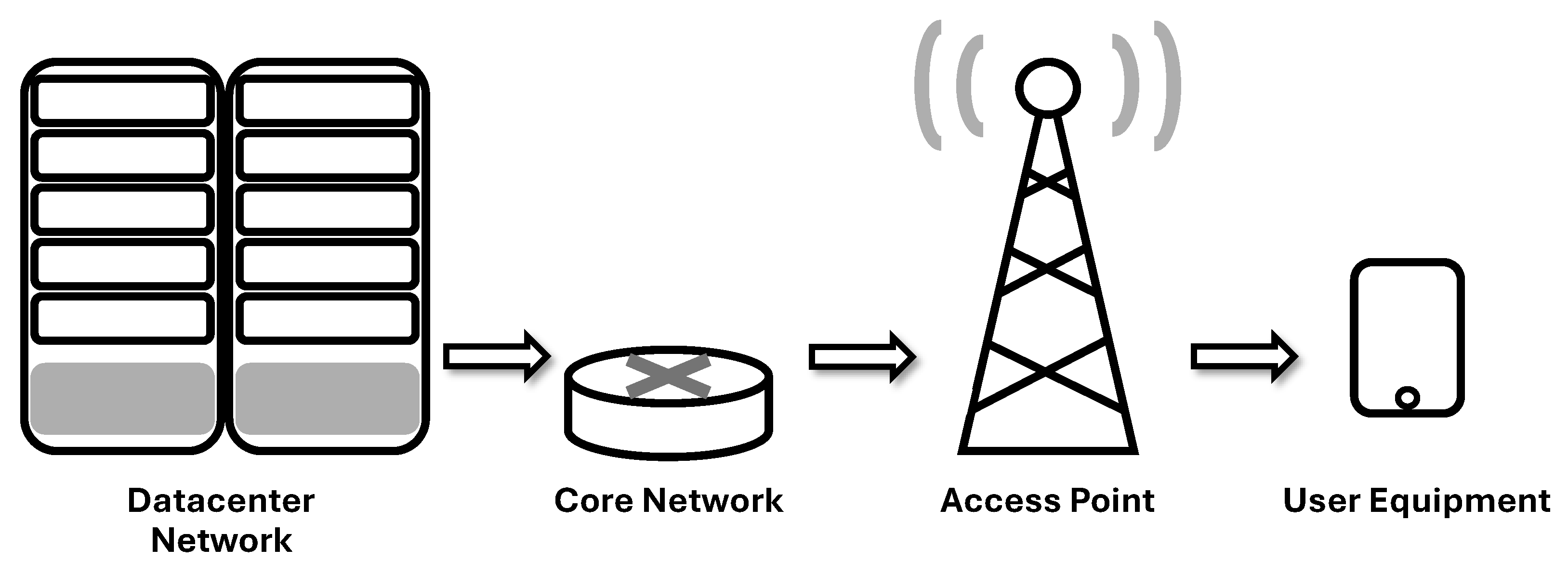
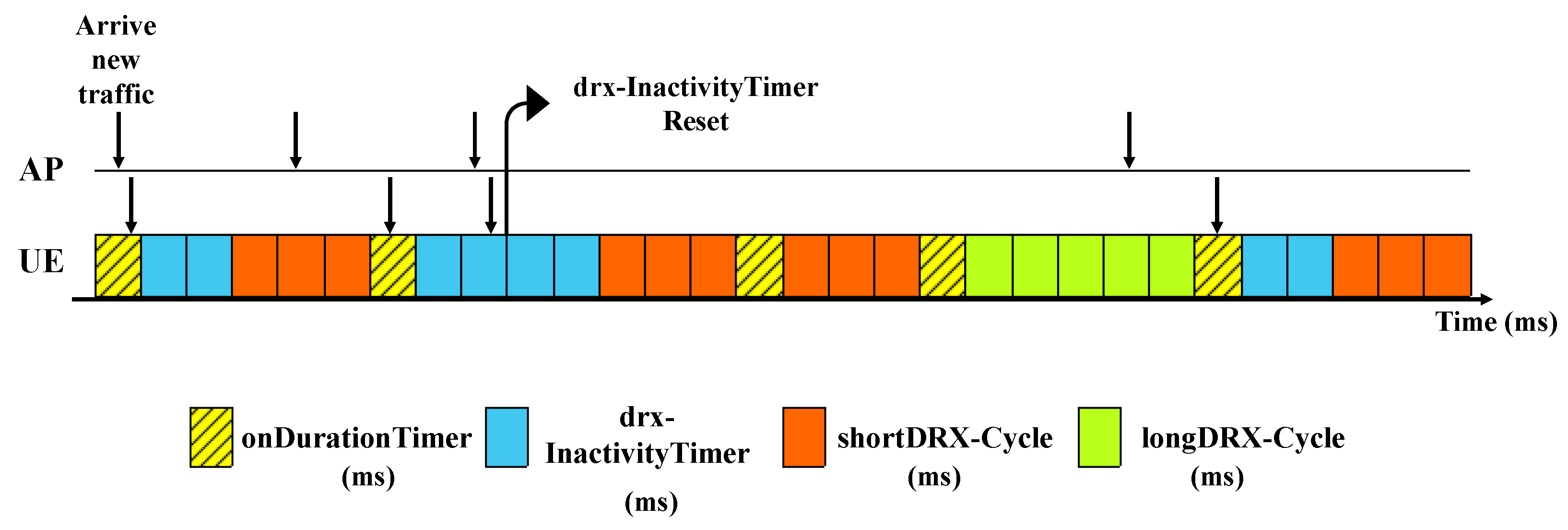
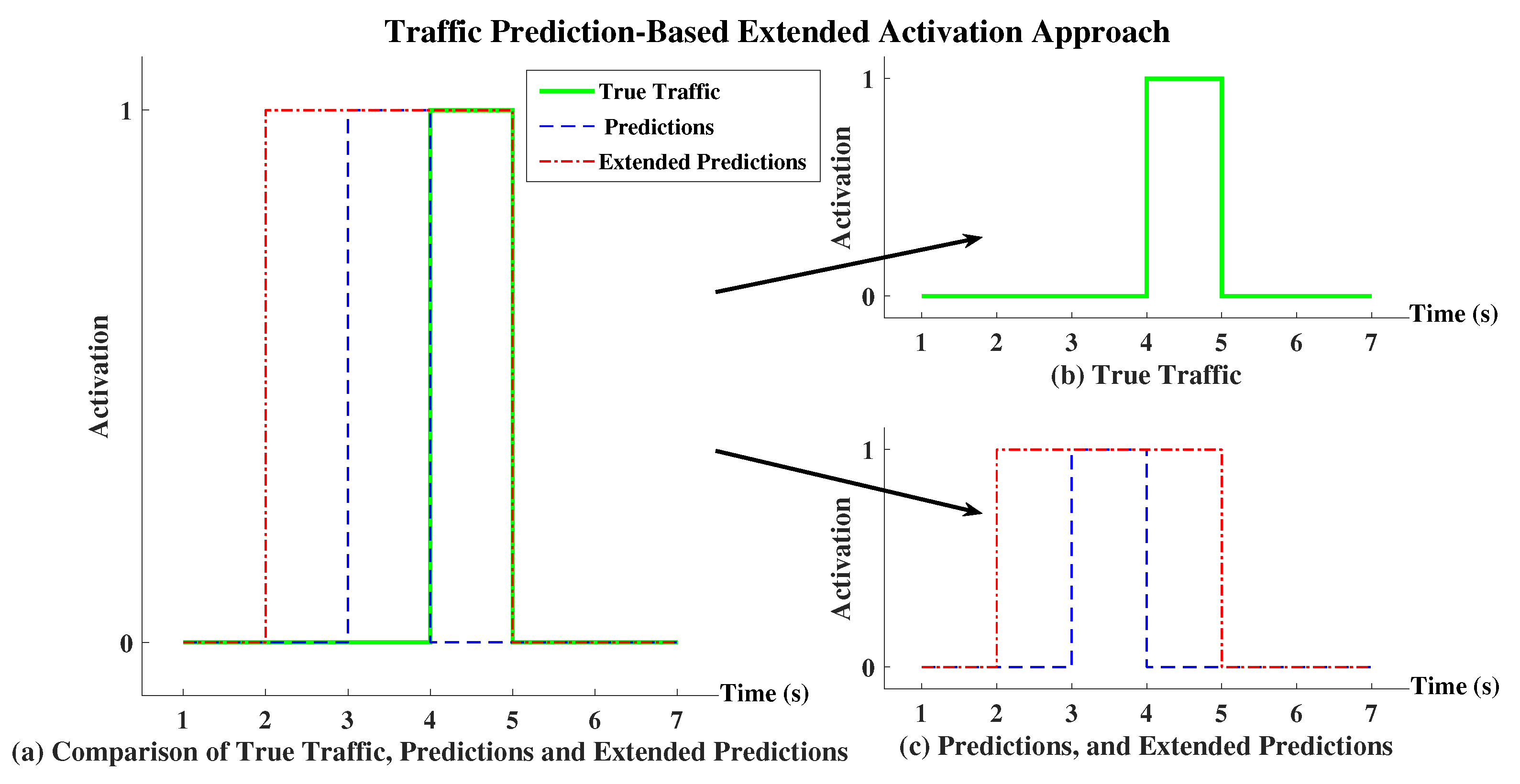


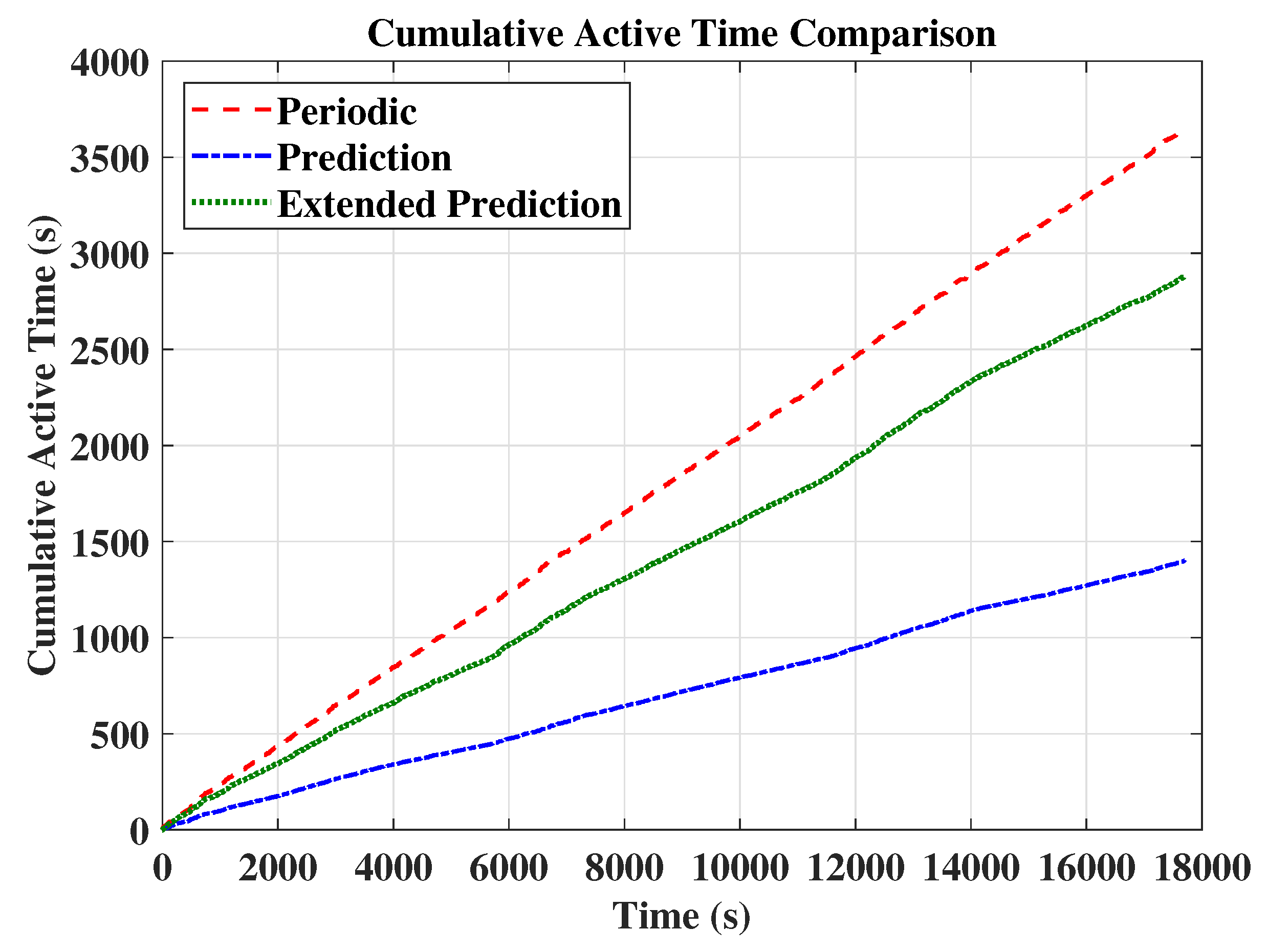

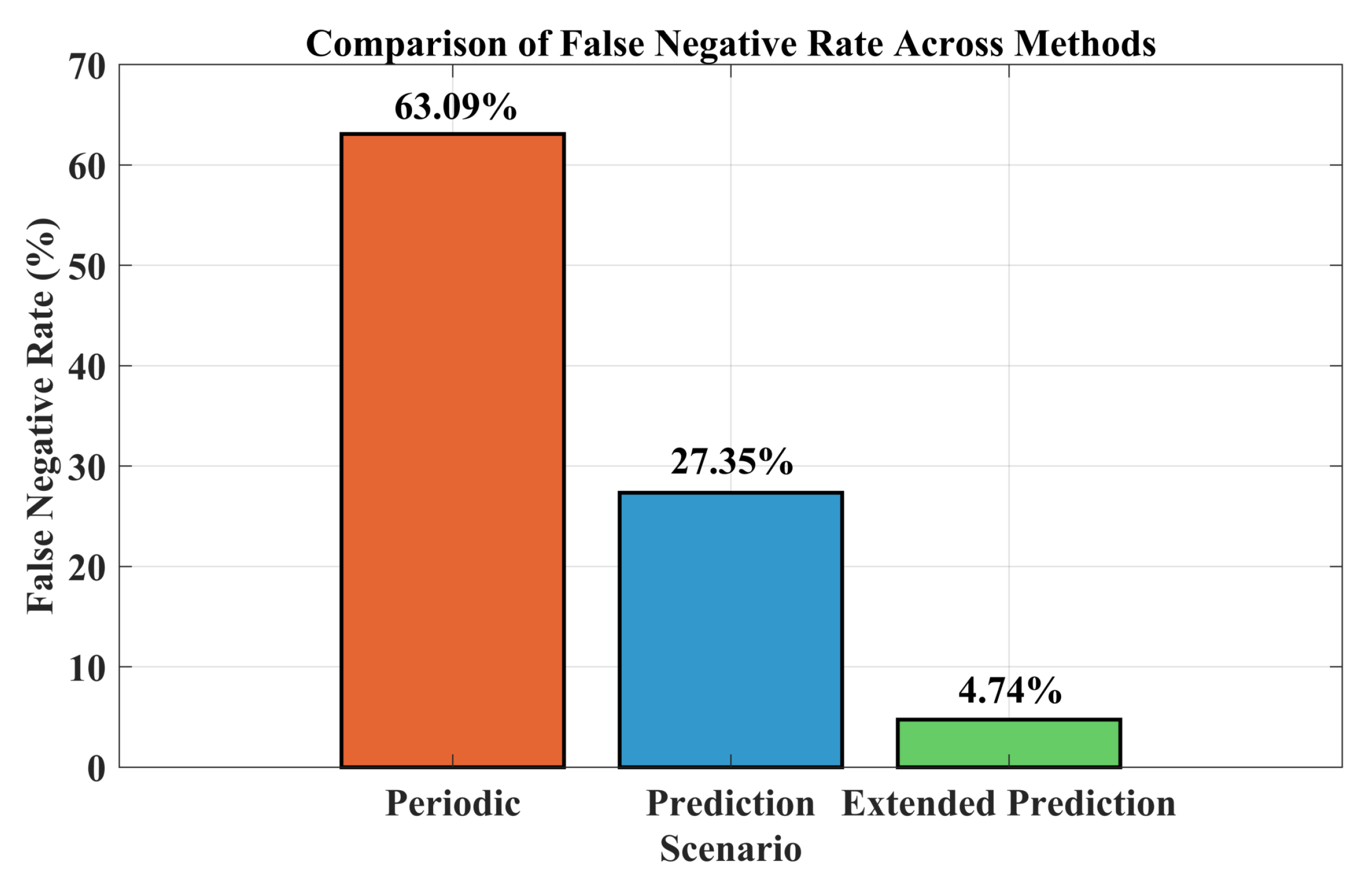
| Parameter | Value |
|---|---|
| onDurationTimer | 10 s |
| inactivityTimer | 5 s |
| shortSleepTimer | 22 s |
| longSleepTimer | 220 s |
| shortSleepRepeatMax | 6 |
| Hyperparameter | Value |
|---|---|
| n_estimators | 294 |
| max_depth | 19 |
| min_samples_split | 4 |
| min_samples_leaf | 5 |
| max_features | None |
| Parameter | Value |
|---|---|
| filters | 92 |
| kernel_size | 3 |
| dense_units | 32 |
| learning_rate | 0.0034 |
| batch_size | 32 |
| Model | OTPa (%) | TOPa (%) | E-TOPa (%) |
|---|---|---|---|
| LSTM | 94.9 | 45.4 | 68.7 |
| GRU | 93.6 | 26.0 | 46.0 |
| TCN | 95.4 | 71.2 | 97.3 |
| RF | 96.0 | 68.0 | 93.8 |
| GRU + RF | 94.6 | 40.3 | 71.0 |
| GRU + RF + LGBM | 96.0 | 68.0 | 91.4 |
| RF + LGBM | 96.1 | 71.6 | 94.5 |
| RF + XGBoost | 95.9 | 65.8 | 89.0 |
| LGBM + XGBoost | 96.0 | 67.3 | 89.7 |
| RF + TCN | 95.8 | 72.6 | 97.6 |
Disclaimer/Publisher’s Note: The statements, opinions and data contained in all publications are solely those of the individual author(s) and contributor(s) and not of MDPI and/or the editor(s). MDPI and/or the editor(s) disclaim responsibility for any injury to people or property resulting from any ideas, methods, instructions or products referred to in the content. |
© 2025 by the authors. Licensee MDPI, Basel, Switzerland. This article is an open access article distributed under the terms and conditions of the Creative Commons Attribution (CC BY) license (https://creativecommons.org/licenses/by/4.0/).
Share and Cite
Yu, J.-H.; Choi, Y.-J.; Seo, S.-H.; Choi, S.-G.; Jeong, H.-Y.; Kim, J.-E.; Baek, M.-S.; You, Y.-H.; Song, H.-K. Improved Connected-Mode Discontinuous Reception (C-DRX) Power Saving and Delay Reduction Using Ensemble-Based Traffic Prediction. Mathematics 2025, 13, 974. https://doi.org/10.3390/math13060974
Yu J-H, Choi Y-J, Seo S-H, Choi S-G, Jeong H-Y, Kim J-E, Baek M-S, You Y-H, Song H-K. Improved Connected-Mode Discontinuous Reception (C-DRX) Power Saving and Delay Reduction Using Ensemble-Based Traffic Prediction. Mathematics. 2025; 13(6):974. https://doi.org/10.3390/math13060974
Chicago/Turabian StyleYu, Ji-Hee, Yoon-Ju Choi, Seung-Hwan Seo, Seong-Gyun Choi, Hye-Yoon Jeong, Ja-Eun Kim, Myung-Sun Baek, Young-Hwan You, and Hyoung-Kyu Song. 2025. "Improved Connected-Mode Discontinuous Reception (C-DRX) Power Saving and Delay Reduction Using Ensemble-Based Traffic Prediction" Mathematics 13, no. 6: 974. https://doi.org/10.3390/math13060974
APA StyleYu, J.-H., Choi, Y.-J., Seo, S.-H., Choi, S.-G., Jeong, H.-Y., Kim, J.-E., Baek, M.-S., You, Y.-H., & Song, H.-K. (2025). Improved Connected-Mode Discontinuous Reception (C-DRX) Power Saving and Delay Reduction Using Ensemble-Based Traffic Prediction. Mathematics, 13(6), 974. https://doi.org/10.3390/math13060974






